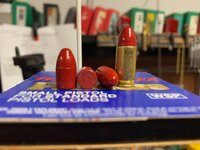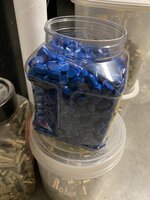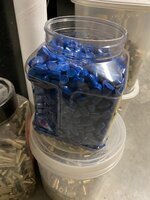- Messages
- 67
- Reactions
- 187
Lately I have switched bullets in my 9mm match load from 125 to 147 grains.
With powder shortages continueing I decided to load heaver bullets to strech my powder supply. My current match load is an MP 356-147 BB RN over just 3.2 grains of Red Dot. This allows me to get over 2000 rounds out of a pound of powder.

With powder shortages continueing I decided to load heaver bullets to strech my powder supply. My current match load is an MP 356-147 BB RN over just 3.2 grains of Red Dot. This allows me to get over 2000 rounds out of a pound of powder.















